On July 22, President Rouhani claimed his administration had fulfilled its promise to control the coronavirus pandemic, despite the fact that he knows better than any other Iranian official critical the situation remains in the country today.
The number of cities on red and orange alerts has reached 349 and there are no hospital beds available in Tehran. Many provinces still suffer from extreme shortage of medical facilities, lack of PCR test kits and the unavailability of testing for the Delta variant of coronavirus.
Not only did the six-day lockdown of Tehran and Alborz provinces and the nominal ban on traveling not reduce the number of travelers to these areas, it drove people to use public transportation instead of private vehicles, making it easier for the virus to spread. At the same time the health minister claims that people are happy with the pace of the vaccination roll-out, his deputy apologizes for the problems that are keeping people from getting vaccinations.
***
The most concise way of describing the pandemic situation in Iran is that it is “super-critical”. There are widespread reports of the shortage of hospital beds in provincial capitals, and this has been felt more sharply in Tehran province, with its population of 15 million. In the 24 hours leading up to noon on Sunday, July 18, more than 17,000 people arrived at hospitals in Tehran for treatement: a new record.
“We really have a serious problem in admitting patients, and we are doing our best so that nobody will have to wait for a bed, but it is difficult to make this happen,” admitted Deputy Health Minister Iraj Harirchi.
According to a report by Tejarat News, there is currently not even a single available bed in Tehran’s Nikan, Imam Khomeini and Apadana hospitals. The report quotes a patient who revealed that hospital officials in Tehran have demanded 30 million tomans, over $7,200, to “arrange” for an empty bed.
Prior to this, Dr. Hossein Kermanpour, the spokesman for Iran’s Medical Council and who also works on an emergency ward, reported that new patients admitted to Tehran’s Milad Hospital have no alternative but to lie down on blankets on the floor provided by the hospital. According to him, every day the hospital receives dozens of calls from people in search of empty beds, beds that do not exist.
“We have not kept even one patient from coming to the hospital,” Health Minister Saeed Namaki has said repeatedly since the pandemic started last February. Iranian citizens have disputed the claim, and they continue to refute it as Iran experiences its fifth wave of the virus.
“Only patients in a critical condition are admitted to the hospitals,” a Tehran citizen told IranWire, adding that he had gone to a number of hospitals and treatment centers throughout the capital. He reported that patients are waiting in emergency wards because no beds are available in normal wards; some arrive at clinics in desperation: “I did not expect to see a line of Covid-19 patients at a government clinic in Tehran’s [well-to-do] Ekhtiyariyeh neighborhood. The clinic had eight beds and all eight had been given to coronavirus patients.” According to him, only two of these patients were in a stable condition and the rest were receiving specialist medical care.
“People are afraid to go to the hospitals,” he said. “Hospitals lack facilities and besides, they have no empty beds. Those who can afford it go to well-equipped and well-staffed clinics and quarantine themselves at home.”
Deputy Minister Apologizes
Earlier in July, Saeed Namaki had announced that, starting on July 10, 400,000 doses of the coronavirus vaccine would be administered each day. The injections did start, but only after a 10-day delay on July 18. However, in recent days the number has fallen to half.
Currently, the Islamic Republic has imported approximately 12 million doses of the vaccine in 23 shipments. Most of these vaccine doses have been imported over the course of June and July, leading to widespread criticisms of the Ministry of Health and the Food and Drug Administration. Health minister Saeed Namaki, however, shirked responsibility for the delays and announced: “importing vaccines is not the responsibility of the health ministry.”
At the same time, Namaki continues to claim that vaccination in Iran is progressing at a fast pace, and that people are satisfied with this progress.Dr. Alireza Zali, director of Tehran Coronavirus Taskforce, however, does not agree with the minister. The process of vaccination, he said on July 18, is not satisfactory, and the country must adopt a “battle approach” when dealing with coronavirus. Even Namaki’s own deputy, Iraj Harirchi, apologized to Iranians for the delays in vaccination.
According to the latest official figures, as of July 22 more than 9.6 million doses of the vaccine have been administrated in Iran and 2,334,317 people have received both doses. Kianoush Jahanpour, the spokesman for the Food and Drug Administration, says more than 300,000 people have been inoculated with the domestic CovIran-Barekat vaccine.
Lockdown in Tehran and Alborz
In the week ending July 22, Covid-19 claimed an average of more than 200 lives a day and the total number of fatalities surpassed 88,000. However, according to a number of Islamic Republic health officials, these figures should be at least doubled to arrive at the real number of fatalities.
When it was announced that the provinces of Tehran and Alborz would be locked down from July 20 for six days, many people immediately set out to travel to the scenic northern provinces in their cars; those who did not have private cars rushed to public transportation terminals.
At the same time, officials of the northern provinces of Gilan and Mazandaran announced that they would not allow people traveling from other provinces to remain in the province, and the police announced they would be stopping cars coming from elsewhere. However, what actually happened on the ground was very different.
Several citizens reported that people traveling in private cars paid fees of between 500,000 and one million tomans ($120 or $240) and were then allowed to continue their journey. Furthermore, not only did the number of travelers not decrease following the introduction of restrictions and fines, it prompted an increase in innovative ways to bypass restrictions.
According to the Islamic Republic News Agency (IRNA), in some cities in Mazandaran on the coast of the Caspian Sea, cars with local license plates have been rented to travelers so that they can bypass restrictions imposed on out-of-province cars. As a result, the number of people from other provinces currently spending time in public spaces in northern provinces has risen.
“Unfortunately, a high number of people who traveled here from other provinces are in our hospitals in critical condition, showing that the Delta variant is no joke,” said Dr. Abtin Heydarzadeh, vice president of Gilan University of Medical Sciences.
According to officials at Mazandaran University of Medical Sciences, all hospital wards in the province are currently treating Covid-19 patients. In a number of cities in Mazandaran, including Amol, the number of inpatients has surpassed 400 and even private hospitals and clinics have been required to treat coronavirus cases. It was also reported that hospitals in Noshahr and Mahmoud Abad are at capacity.
Official Coronavirus Statistics
According to official statistics announced daily by the health ministry, a total of 1,471 patients lost their lives to Covid-19 in the week ending July 22. With 250 deaths, July 20 had the highest number of fatalities for the week.
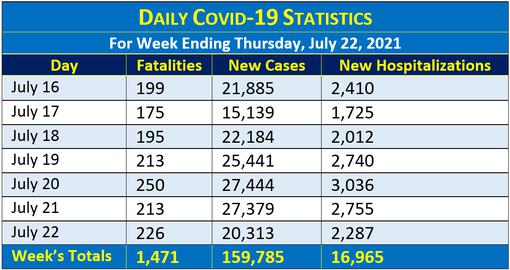
At the week’s end, 4,628 Covid-19 patients were being treated in ICUs. As of July 23, 2,334,317 Iranians have received both doses of the vaccine.
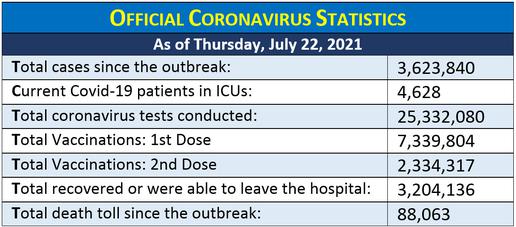
At the week’s end the health ministry announced that currently 232 Iranian cities are on red alert, an increase of 63 over the previous week; 117 are orange and 99 are yellow. No city in Iran is currently on blue alert.
visit the accountability section
In this section of Iran Wire, you can contact the officials and launch your campaign for various problems




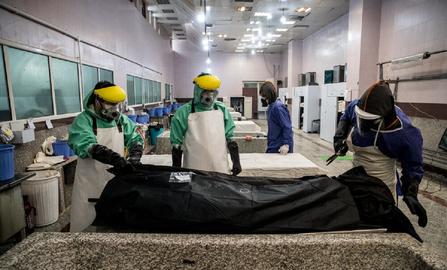
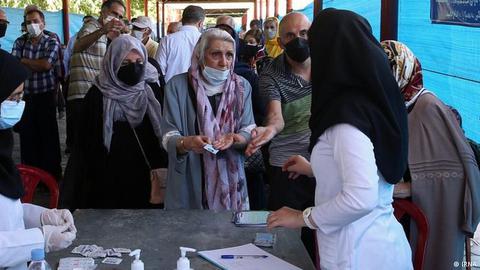




















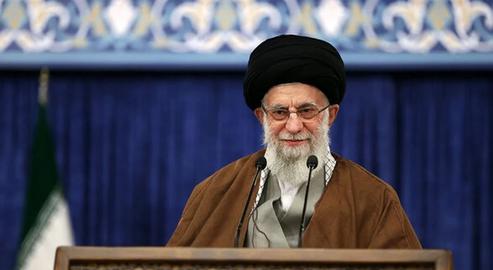
comments